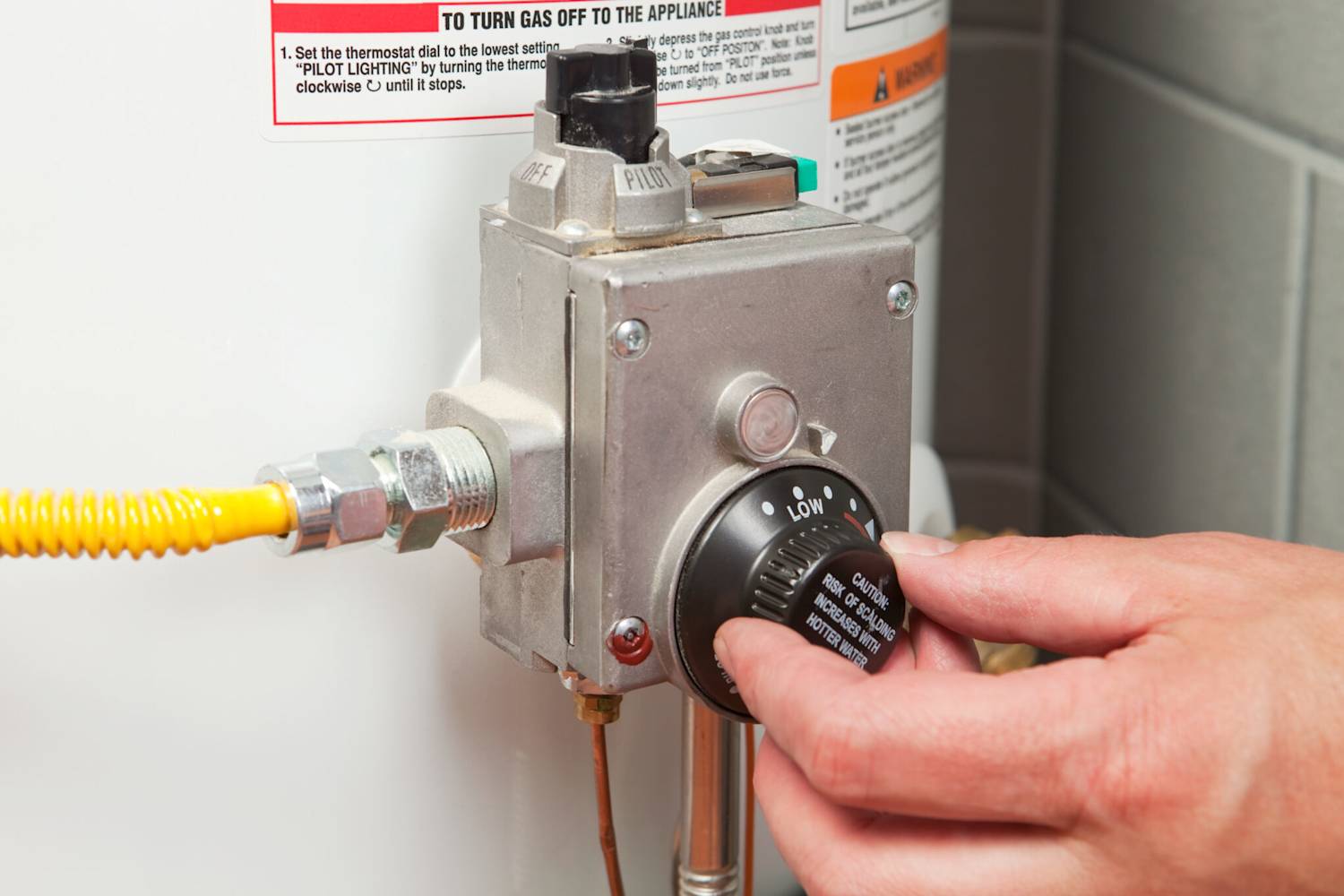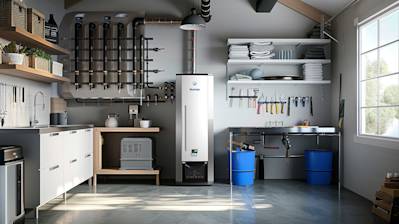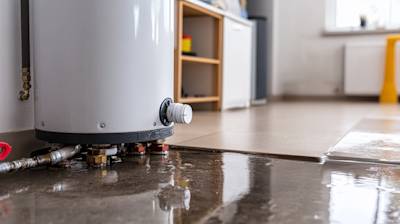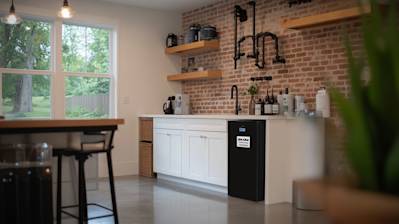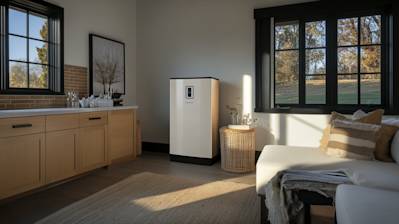When your water heater is underperforming or suddenly breaks down, the fault may very well lie in your thermostat. In many cases, a simple water heater thermostat replacement might be all you need to restore your hot water supply. This comprehensive guide aims to provide you with essential knowledge about water heater thermostats: their types, functions, common issues, and how you can effectively replace them. This guide also includes practical steps toward successful DIY water heater thermostat replacement while highlighting when professional help might be necessary.
Understanding Your Water Heater Thermostat
The thermostat is a crucial component of your water heater. It is responsible for monitoring and controlling the temperature of the water. Once the water reaches the specified temperature, the thermostat shuts off the energy supply, preventing overheating. Conversely, when the water temperature drops below the preferred level, the thermostat re-engages the heat source.
Types of Thermostats
-
Gas water heater thermostat: This type is integrated into the gas valve. It regulates the flow of gas towards the burner to control the water’s temperature.
-
Electric water heater thermostat: Electric heaters usually have two thermostats (upper and lower) managing two heating elements. They interact to maintain a steady water temperature.
Common Water Heater Thermostat Problems
Sometimes, the root of hot water issues isn’t the water heater itself but the thermostat. Here are some common problems associated with a malfunctioning thermostat.
Erratic Water Temperature
Fluctuating temperatures or excessively hot water are red flags that your thermostat may be faulty. This inconsistency often signals a thermostat failure to properly regulate the heating elements.
No Hot Water
If you're experiencing a total blackout of hot water, your thermostat may be broken or misadjusted, inhibiting power from reaching the heating elements.
Insufficient Hot Water
If your water heater supplies hot water but runs out quickly, your thermostat could be set at a lower temperature or may be faulty and not allowing the tank to fully heat up.
Replacing a Water Heater Thermostat: A Step by Step Guide
If you possess some DIY prowess, you might be capable of undertaking a water heater thermostat replacement yourself. However, situations such as gas leaks or electrical hazard potential could necessitate a professional's service. Here’s a step-by-step guide to replacing an electric water heater thermostat, given everything is safe and secure.
Materials and Tools Required
- Replacement thermostat
- Screwdriver
- Voltmeter
The Replacement Process
-
First, shut down the circuit breaker dedicated to the water heater to ensure safety.
-
Gain access to the thermostat by removing the thermostat cover on the heater.
-
Use a voltmeter to ensure no current is flowing to the thermostat.
-
Take a picture or note down the wiring setup to rewire correctly after replacement.
-
Disconnect the wires from the faulty thermostat and remove the thermostat from its housing.
-
Place the new thermostat into the housing, ensuring it fits securely.
-
Reconnect all wires to their appropriate location on the new thermostat, using your notes or picture as a guide.
-
Restore power to the water heater by switching on the circuit breaker, then check for proper operation.
It's important to note that improperly executing any of these steps could potentially damage your water heater, lead to inefficient performance, or pose serious safety risks. If ever in doubt, it's advisable to call in a professional technician to handle the task of water heater thermostat replacement.
Being able to effectively diagnose and resolve a thermostat issue can save you from potential discomfort and avoidable expenses. However, embarking on a DIY water heater thermostat replacement must be done with care. It's critical to know when to call in a professional technician to prevent damaging your appliance or putting your safety at risk. With this comprehensive guide, your journey towards understanding and effectively maintaining your water heater thermostat has been made that much simpler.
FAQs About Water Heater Thermostat Replacement
Why would you need to replace a water heater thermostat?
A water heater thermostat may need to be replaced for several reasons. Typical indicators include irregular water temperatures, where the water may be too hot or too cold. Replacing a faulty thermostat can ensure consistent water temperature and prolong the lifespan of your water heater system.
How the thermostat of a water heater works?
The thermostat of a water heater regulates the water temperature by signaling the unit to heat the water when it falls below the set temperature, and to stop heating once the desired temperature is reached. It plays a crucial role in providing a comfortable and safe temperature for your water needs.
Are there different types of thermostats for water heaters?
Yes, there are different types of thermostats for water heaters, primarily mechanical (dial-type) and electronic (digital) thermostats. The choice depends on the model of your water heater and personal preference. Electronic thermostats provide more precise temperature control than mechanical ones.
What are the steps followed in water heater thermostat replacement?
Water heater thermostat replacement typically involves shutting off the power supply, removing the access panels and insulation, disconnecting the wires from the old thermostat, removing the old thermostat, and finally installing and connecting the new thermostat. It's always best to follow the specific instructions provided by the manufacturer of your water heater or thermostat.
Can we do a water heater thermostat replacement on our own?
Yes, many homeowners replace their water heater thermostat on their own by carefully following the manufacturer’s instructions. However, if you're not comfortable dealing with electrical components or if the process seems complex, it's a good idea to hire a professional to avoid potential risks like electrical shock or improper installation.
How do you test a water heater thermostat to know if it's faulty?
You can use a multi-meter to determine if the thermostat is faulty. By touching the probes to the terminals on the thermostat, you can see if it's sending volts to the heating elements as it's supposed to. If there's no voltage reading or if it's inconsistent, the thermostat likely needs to be replaced.
How to choose a replacement thermostat for my water heater?
When choosing a replacement thermostat, make sure to match the type (mechanical or electronic) and voltage to your water heater specification. Also, it's best to opt for a thermostat from the same manufacturer as your water heater for optimum compatibility.
What is the cost involved in having a water heater thermostat replaced?
The cost of replacing a water heater thermostat is influenced by factors such as thermostat type, the complexity of the installation, and whether you're doing it yourself or hiring a professional. While the thermostat itself usually costs between $20 and $50, the cost of professional installation can vary widely, from $150 to $350 or more.
When should I call a technician for water heater thermostat replacement?
It's advisable to call a technician if you're uncomfortable performing the replacement yourself, if you've attempted to replace the thermostat and there's still no hot water, or if the problem seems to be something more complex than a faulty thermostat.
Can a faulty water heater thermostat cause high electricity bills?
Yes, a faulty thermostat can cause your water heater to heat water continuously, leading to higher electricity consumption and subsequently higher electrical bills. Replacing a faulty thermostat can help restore the efficiency of your water heater and reduce your energy bills.
Pros and Cons of Water Heater Thermostat Replacement
Pros of Replacing a Water Heater Thermostat
Enhanced Efficiency
One of the main advantages linked with water heater thermostat replacement is improved efficiency. An old or faulty thermostat can lead to unnecessary energy loss, leading to increased utility bills. Here are the pertinent points:
- An up-to-date thermostat optimizes the water heating process, using less energy to heat the same amount of water.
- A more efficient water heater can greatly reduce your monthly utility bills, resulting in significant savings over time.
Consistent Temperature
A new, well-functioning thermostat provides a more accurate and consistent water temperature. This allows for more comfortable showers and enhances the effectiveness of washing machines and dishwashers that rely on hot water.
- A thermostat replacement minimizes the chances of scalding hot or uncomfortably cold water.
Higher Durability
A fresh thermostat not only brings in updated technology, but it also contributes to the overall lifespan of your water heater. Here are the details:
- Old thermostats can lead to wear and tear on your water heater, shortening its lifespan.
- A thermostat replacement can circumvent these issues, prolonging the water heater's useful life.
Cons of Replacing a Water Heater Thermostat
Upfront Costs
One of the primary drawbacks of water heater thermostat replacement is the immediate expense involved. Here's a closer look:
- The cost of a new thermostat can be quite steep, especially if you're upgrading to a model with advanced features.
- The installation charges can add to this cost, particularly if you hire a professional because you're uncomfortable doing it yourself.
Installation challenges
Depending on your ability and comfort levels, the installation of a new thermostat can be a tedious experience. So, here's what you need to know:
- If you decide to handle the installation yourself, there's a risk of damaging the new thermostat or even your water heater if you lack the appropriate skills.
- The process can be time-consuming and may require specific tools and equipment.
Incompatibility Issues
Depending on the water heater's model and make, a new thermostat may not be compatible with your model. Here are some critical points to consider:
- If the new thermostat isn't compatible, you may not be able to control the water heater accurately, leading to inconsistent water temperatures.
- The incompatibility can also result in decreased efficiency, thereby increasing energy consumption and costs.
Altogether, the decision to replace a water heater thermostat carries both pros and cons. The key is to look at your individual requirements before making a decision. If your current thermostat seems to be functioning well enough or if the costs of replacement outweigh the potential benefits, you may decide to stick with your current setup. On the other hand, if your thermostat is noticeably less efficient or causing inconsistencies in water temperature, a replacement could save you money and hassle in the long run.
Summary
Experiencing issues with your water heater can put a halt to many daily activities such as cooking, cleaning, and bathing. However, a water heater thermostat replacement can often be an effective and affordable solution. With a new thermostat, not only can you return to enjoying your hot showers, but the efficiency of your heater generally improves too. Upgrading your thermostat might seem like a small part replacement, but it can noticeably enhance your quality of life.
A water heater thermostat replacement is also a quite straightforward process. Rather than waiting around for a technician, many homeowners choose to replace the thermostat themselves. All it requires is a new thermostat model of the correct type, a few standard tools, and patience to follow the replacement instructions carefully. But bear in mind, even if it seems uncomplicated, always prioritize safety when dealing with electrical appliances.
Ultimately, a water heater thermostat replacement is a prudent choice for anyone looking to tackle an underperforming or nonfunctioning water heater. The benefits include improved heater performance, the comfort of warm water, and potential savings on increased energy efficiency. Whether you bring in a pro or do-it-yourself, replacing your thermostat can provide you with peace of mind and restore your water heater to its optimal functionality.
About KYPD Plumbing
Welcome to KYPD Plumbing, your go-to Plumbing solution in Nicholasville, KY. Our team is committed to providing top-notch services at affordable prices. We believe in treating our customers with respect and integrity while delivering high-quality plumbing solutions. With several years of experience under our belt, we have proven that we can handle any plumbing issues reliably and swiftly. For more about what we do, feel free to visit our website. Experience hassle-free plumbing, experience KYPD.
Tags: water heater, thermostat, replacement,


